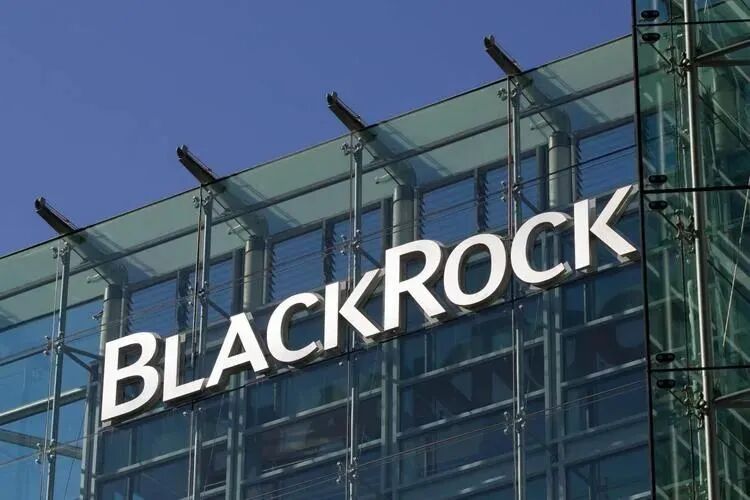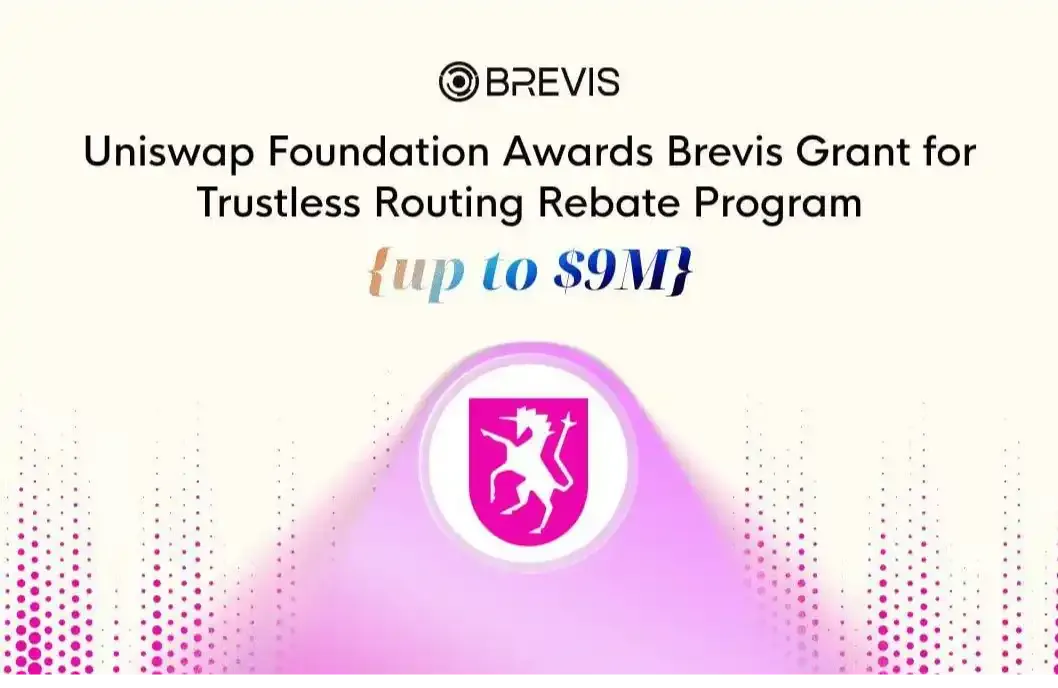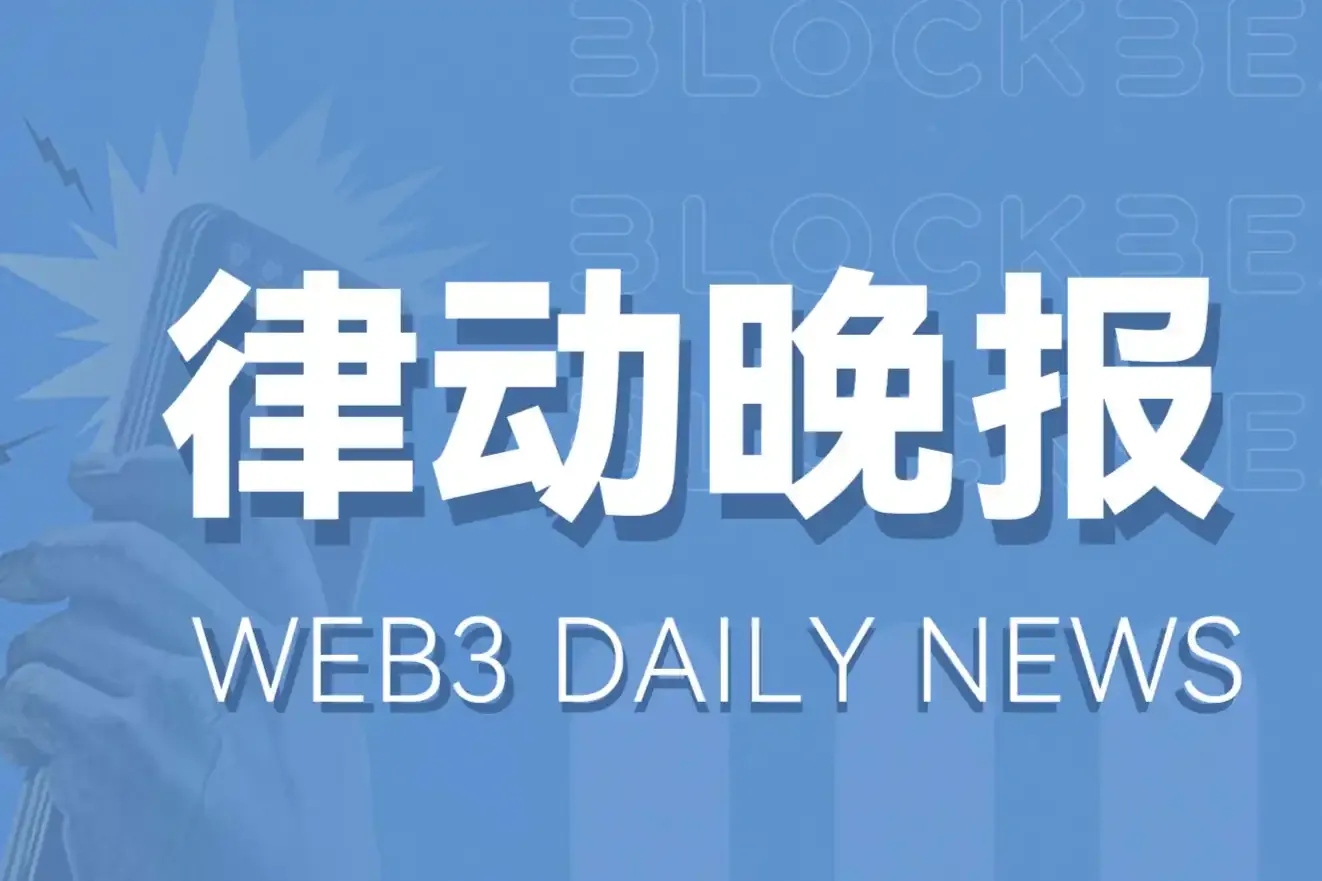Author: Liang Yu
Editor: Zhao Yidan
The global financial system is undergoing a structural transformation driven by the tokenization of real-world assets (RWA). In October 2025, according to the Financial Times, BlackRock announced an additional $500 million investment in its tokenized fund BUIDL, deploying it on the Aptos public blockchain, pushing the total value of RWA on that chain to over $1.2 billion, ranking it third across the network; meanwhile, the Federal Reserve officially proposed a "limited access master account" plan, allowing compliant stablecoin issuers to directly access the FedNow and Fedwire payment systems for the first time. These two major events jointly declare that traditional financial giants are no longer tentative but are fully embracing the tokenization future of RWA with a dual choice of capital and technological underpinnings.
According to the "RWA Market Semiannual Report" released by blockchain security firm CertiK in July 2025, by mid-2025, the RWA market size had surpassed $26 billion, growing more than five times since 2022, making it the second fastest-growing sector in the digital asset ecosystem. Its development trajectory is no longer limited to technological iteration and asset expansion but points towards a reconstruction of the underlying logic of future finance. The key assumption is that if major global regulatory frameworks achieve substantial mutual recognition in the next five years, RWA will enter an explosive growth channel; as decentralized financial protocols deeply integrate with traditional financial infrastructure, a new structure for a highly automated, cross-chain interoperable global capital market is taking shape. We are standing at the beginning of a new financial era where "institutional trust" and "algorithmic trust" are intertwined. At this moment, a core question deserves deep reflection: does the entry of traditional financial giants signify an integration into the crypto world, or will it trigger a deeper reconstruction of financial underlying logic?

1. The Entry of Giants: Strategic Positioning and Ecosystem Building in Traditional Finance
The participation of traditional financial institutions is the core driving force behind this round of RWA explosion, with their actions evolving from early observation and research to large-scale strategic resource investment. BlackRock's additional $500 million investment in its tokenized fund BUIDL not only reflects its firm optimism about the prospects of the RWA sector but also reveals its strategic intent to choose high-performance new public chains as the technological underpinning. Established asset management firm Franklin Templeton has adopted a differentiated competitive strategy, attracting a wide range of investors with low management fees, with its on-chain fund BENJI reaching a scale of $800 million.
However, the giants' ambitions extend far beyond this. Global banking giants are also actively positioning themselves. HSBC has partially migrated its massive euro-denominated secured bond program to the blockchain to explore more efficient issuance and settlement. JPMorgan's Onyx digital asset network has already been operational, processing over $300 billion in short-term asset transactions. These cases collectively indicate that top financial institutions no longer view RWA as a gimmick or a marginal business but have elevated it to a strategic height that reshapes future asset management models.
(1) Breakthroughs in Clearing Infrastructure and Their Profound Impact
The Federal Reserve's "limited access master account" proposal, which allows compliant stablecoin issuers to directly access the FedNow and Fedwire payment systems, has implications that go far beyond a technical upgrade—it is the first time digital assets have been incorporated into a central bank-level clearing network, fundamentally shaking the "credit barrier" between on-chain assets and fiat currency systems. Previously, stablecoins like Circle's USDC needed to be cleared indirectly through commercial banks, and the collapse of banks like Silvergate in 2023 exposed the vulnerabilities of traditional channels. With direct access to the Federal Reserve system, the settlement efficiency and security of RWA will achieve a qualitative leap, providing central bank-level credit backing for tokenized government bonds, real estate, and other assets. This transformation clears the most critical infrastructure barriers for giants to enter on a large scale.
(2) Institutional-Led Ecological Characteristics and High Barriers: From U.S. Market Drive to European Institutional Building
Unlike the U.S. approach, which is market-driven and technology-focused, the development of RWA in Europe is more grounded in institutional design and regulatory consensus. Germany is a typical representative of this path, having passed the Electronic Securities Act (eWpG) earlier, which provides a legal basis for blockchain securities and establishes a high-standard access system. This high barrier, while limiting the influx of startups, has built a solid moat for traditional financial infrastructure operators like Clearstream, a subsidiary of Deutsche Börse. Clearstream plans to launch Bitcoin custody services in 2025 and enhance its digital asset capabilities through the acquisition of Crypto Finance AG. This "rigorous order" in ecological construction ensures the robustness of RWA development but may also suppress innovative vitality to some extent.
2. Asset Diversification: Penetration from Financial Core to Real Economy
The asset categories of RWA are undergoing a profound diversification evolution, rapidly expanding from the initially singular U.S. Treasury bonds to private credit, commodities, and even broader real economy sectors. According to industry data platform RWA.xyz in the "RWA REPORT 2025," as of September 2025, the total on-chain RWA scale had surpassed $30 billion, covering multiple asset categories including private credit, government bonds, commodities, stocks, and alternative funds. This evolution in asset composition clearly outlines RWA's shift from competing for the safest "safe haven" assets to gradually unlocking assets with greater yield potential and socio-economic value.
(1) The Rise of Private Credit and Its Operating Mechanism
Private credit has become the largest asset category in RWA, with its rapid development revealing the market's demand for high-yield, non-standard assets. For example, U.S. non-bank institution Figure Technologies issues home equity lines of credit (HELOCs) through its proprietary Provenance blockchain, with active loans on its platform reaching as high as $11 billion. The operational details are as follows: the platform allows homeowners to use their home equity as collateral to obtain credit lines of up to 85% of their home's value. The entire process, from credit assessment, loan issuance to interest payment, is automated through smart contracts, transparently displaying key information (such as collateral value and repayment records) on-chain, significantly reducing information asymmetry and credit risk. Such cases mark the first time RWA has achieved verifiable asset yield distribution in real credit business, representing a key step for blockchain technology to penetrate from the financial periphery to the core credit market.
(2) The "Entry Effect" and Model Innovation of Tokenized Government Bonds
The scale of tokenized U.S. Treasury bonds has seen significant growth. The core driving force behind this growth is that Treasury bonds, as one of the safest assets globally, provide institutional investors with a low-risk, relatively low-cognitive-threshold entry point into the RWA world. BlackRock's BUIDL fund holds a market share of 37% with a scale of $2.82 billion, strategically covering seven public chains including Ethereum and Solana, showcasing its multi-chain layout strategy. On the other hand, Ondo Finance has taken innovation a step further by launching USDY, a zero-management-fee yield token backed by short-term U.S. Treasury bonds, providing non-U.S. investors with a convenient channel for dollar yields. These practices are reshaping the stablecoin ecosystem, giving rise to emerging stablecoins like Ethena USDtb, which directly distribute Treasury bond interest to holders, overturning the traditional model of interest-free stablecoins.

(3) Long-Tail Exploration from Financial Assets to Real Assets
Although tokenized stocks currently account for a small proportion of the RWA market, they experienced explosive growth in 2025. The collaboration between Kraken and Backed Finance is a typical case, as they launched xStocks based on the Solana network, providing tokenized versions of over 50 U.S. stocks, including Apple and Tesla, and innovatively supporting these tokenized stocks as collateral for lending, breaking the functional boundaries of traditional stock markets. In the commodities sector, Paxos Gold and Tether Gold dominate, with a scale of $1.51 billion, almost capturing the entire share of commodity RWA.
More cutting-edge explorations have extended to non-standard assets such as real estate, artworks, and intellectual property. Although these areas have not yet formed a scale, valuable experiments have emerged. For example, certain jurisdictions have begun to attempt the tokenization of ownership in commercial real estate to lower investment thresholds and improve liquidity. In the art sector, blockchain-based traceability and ownership registration provide technological possibilities for partial ownership transactions of high-value artworks. The tokenization prospects of these long-tail assets are broad, but the challenges they face are also more severe, including complex legal rights confirmation, lack of standardized valuation systems, and deeper liquidity dilemmas, with large-scale development awaiting further clarification of regulatory frameworks and the maturation of related technologies.
3. Global Regulatory Landscape: Complex Game of National Strategy and Market Drive
The global nature of RWA means its development is deeply constrained by the divergent regulatory attitudes of various countries, currently forming a broad regulatory spectrum from aggressive to cautious. Globally, three regulatory paradigms are gradually becoming clear: Thailand's "state-driven" aggressive model, the "institutional prudence" model of the EU and Germany, and Hong Kong's "prudent openness" balanced approach.
Aggressive Model: Thailand's "Testing Ground" Logic and Long-Arm Jurisdiction
Thailand has established a "three-pillar" regulatory system composed of the SEC, the central bank, and the anti-money laundering office through the "Emergency Decree on Digital Asset Business," demonstrating its ambition to elevate the digital economy to a national strategy. Its issuance of the world's first tokenized government bond, G-Token, and the launch of the "TouristDigiPay" program (allowing tourists to use cryptocurrencies for payments) are active experiments that deeply integrate key national industries (such as tourism) with blockchain technology. However, the more controversial aspect of its regulatory practice is the "long-arm jurisdiction" clause, which requires foreign platforms with features such as Thai language services and support for Thai baht transactions to also apply for licenses from Thai authorities. This attempt aims to bring global innovation within the reach of local regulation but has raised concerns about regulatory overreach and international legal conflicts.
Institutional Model: The EU and Germany's Institutional Prudence and Cross-National Coordination
Germany, based on the Electronic Securities Act (eWpG) and the Banking Act effective in 2021, has explicitly included blockchain securities within the scope of property protection, although its current scope is still cautiously limited to bonds and fund shares. The EU's "Markets in Crypto-Assets Regulation" (MiCA), which will officially take effect in June 2024, further unifies licensing standards across the bloc, with its severity evident in BaFin's suspension of Ethena's stablecoin business in Germany due to insufficient capital. While this high standard greatly ensures financial security, it has also led to an average approval time of 18 months for German crypto licenses, far exceeding that of other EU countries. The EU's practice raises a key question: how can national regulatory agencies effectively coordinate and mutually recognize under the MiCA framework? Although MiCA aims for unification, there remain differences in interpretation and operation among national regulatory agencies regarding specific requirements, such as the definition of "qualified assets" and custody requirements, posing real compliance obstacles for cross-border operations of RWA.
Balanced Model: Hong Kong's "Sandbox Exploration" and Mainland's Prudent Tone
Hong Kong has proposed the "LEAP" framework in its "Digital Asset Development Policy Declaration 2.0," clearly encouraging the expansion of tokenized products, reflecting its "sandbox" spirit of fostering innovation in a controlled environment. However, according to a market report by Reuters in September 2025, it is rumored that mainland regulatory authorities have required some Chinese-funded brokerages in Hong Kong to suspend RWA operations. Although this has not been officially confirmed, it genuinely reflects the sensitivity and complexity faced by RWA projects when involving cross-border capital flows. For many projects, resolving cross-border funding issues often relies on QFLP (Qualified Foreign Limited Partner) or ODI (Overseas Direct Investment) channels, both of which face challenges such as complex approval processes and high policy uncertainty. This strategy of "orderly advancement" highlights the friction that still exists between emerging technological models and traditional regulatory frameworks.

These three paths represent the three current "national paradigms" of global RWA regulation—state-driven, institutional prudence, and cautious openness. Together, they constitute the complex regulatory ecology that RWA globalization must navigate.
4. Security and Risk: Vulnerabilities in the Dual World of On-Chain and Off-Chain
As the scale of RWA expands, its security issues have evolved from simple credit defaults to a multidimensional complex risk matrix that includes technical vulnerabilities, compliance failures, and judicial uncertainties. The CertiK report indicates that losses from RWA security incidents in the first half of 2025 reached as high as $14.6 million, far exceeding the $6 million total for all of 2024, with these losses primarily stemming from technical vulnerabilities in on-chain operations rather than traditional financial defaults.
(1) Five-Layer Risk Architecture and Challenges in the Technical Deep Water Zone
The five-layer security stack model proposed by security firm CertiK—"Asset-Legal-Operational-Data-On-Chain"—provides a framework for systematically understanding RWA risks. At the asset layer, risks are concentrated on false reserve proof, i.e., whether the underlying assets supporting the tokens genuinely exist in sufficient amounts. At the legal layer, the key issue is whether the bankruptcy isolation of special purpose vehicles (SPVs) is truly effective in legal practice and whether it can protect investors' claims to the underlying assets in the event of the initiator's bankruptcy. The operational layer involves risks related to offline asset management, such as single points of failure or internal fraud by custodians.
At the data and on-chain layers, technical risks are the most concentrated and complex. In addition to the well-known issues of oracle manipulation and smart contract vulnerabilities, data privacy has become an increasingly prominent challenge. Many RWA projects involve sensitive financial data and personal identity information, and how to leverage the transparency of blockchain without violating strict data regulations like the EU's General Data Protection Regulation (GDPR) is a pressing technical challenge. Cryptographic technologies such as zero-knowledge proofs are considered potential solutions, allowing the verification of transaction validity without exposing raw data, but their large-scale commercial application still faces performance and usability bottlenecks. Additionally, the security of cross-chain assets has become more pronounced with the proliferation of multi-chain strategies, as cross-chain bridges connecting different blockchains have repeatedly become hotspots for hacker attacks.
(2) Judicial Uncertainty and the Real Dilemma of Cross-Border Disputes
For RWA projects with underlying assets located in mainland China, foreign investors will face significant judicial relief dilemmas in the event of disputes. In Chinese judicial practice, courts often declare contracts involving cryptocurrency assets as "legally invalid" on the grounds of violating public order or relevant regulatory policies, leading to considerable uncertainty in protecting investors' rights. On the other hand, Thailand's anti-money laundering office mandates that users engaged in non-face-to-face transactions undergo offline identity verification. While this measure enhances security, it directly conflicts with the inherent anonymity and borderless characteristics of blockchain technology. These cases indicate that RWA projects not only need to manage technical risks but also must navigate cautiously through complex and even contradictory multinational legal systems.
5. Future Pathways: From a Trillion-Dollar Market to the Reconstruction of Financial Underlying Logic
Boston Consulting Group predicts that the global scale of tokenized assets could reach $16 trillion by 2030. The realization of this grand vision will not be the result of linear growth but will require overcoming the triple barriers of technology, institutions, and cognition, ultimately triggering a reconstruction of financial underlying logic.
(1) Synergistic Evolution of Technology and Institutions
The opening of the Federal Reserve's payment system suggests that the future of RWA relies not only on improvements in blockchain performance (such as throughput and finality) but also on accompanying institutional innovations. For example, while JPMorgan's Onyx platform has processed over $300 billion in short-term asset transactions, its future leap in efficiency may come from direct access to central bank payment systems like FedNow, enabling true T+0 settlement and significantly compressing the liquidity premium arising from settlement delays. Meanwhile, the collaborative process of the EU's MiCA and Germany's eWpG in practice indicates that global regulatory frameworks must actively seek mutual recognition and cooperation while acknowledging differences, building a "regulatory highway" for cross-border RWA flows.

(2) Spiral Expansion of Asset Categories and Integration with Cutting-Edge Technologies
Currently, RWA remains highly concentrated in financial assets, but the future potential lies in the large-scale introduction of non-standard assets such as real estate, artworks, intellectual property, and carbon credits. Thailand's tokenization of tourism revenue and the Shanghai Malu grape project attempting to put agricultural assets on-chain provide valuable early samples for the tokenization of non-standard assets. However, the successful tokenization of such assets requires addressing a series of more complex issues, including credible asset rights confirmation, dynamic and fair valuation mechanisms, and deep liquidity solutions. This will likely depend on the deep integration of cutting-edge technologies such as artificial intelligence (for automated valuation and risk pricing) and the Internet of Things (for real-time monitoring of physical asset status) with blockchain, collectively constructing a dynamic and trustworthy digital mirror of non-standard assets.
(3) Rethinking the Potential of Inclusive Finance and Ethical Boundaries
Theoretically, RWA can significantly lower the investment threshold for assets (such as private equity and commercial real estate) that have traditionally been monopolized by large institutions by fragmenting ownership, thereby unleashing enormous inclusive finance potential. However, it is essential to remain vigilant against potential regulatory arbitrage and ethical risks. The U.S. Treasury has explicitly warned that stablecoin access to central bank payment systems "does not equate to bank status," and does not enjoy protections such as deposit insurance. Federal Reserve Governor Bowman has also publicly expressed concerns that if such new tools operate outside effective regulation, they could lead to financial instability. Furthermore, while tokenized private credit can enhance capital allocation efficiency, if it ultimately detaches from serving the real economy and circulates in complex financial engineering, it may exacerbate systemic risks. Therefore, the development of RWA must be accompanied by a continuous rethinking of the essence of finance and ethical boundaries.
At the same time, the Asian market is becoming a new engine for RWA expansion. Policy experiments in Hong Kong, Singapore, Thailand, and other regions may form an "Asian model" independent of Europe and the U.S. within the next three years, providing new solutions in balancing institutions and innovation. This diversified regional development path will make the global landscape of RWA richer and more resilient.
Conclusion: Moving Towards the Future Amidst Competition and Integration
The ultimate narrative of RWA is not a simple replacement of technology for traditional finance but rather a catalyst through blockchain technology that enables the more efficient circulation and allocation of asset value on a global scale. BlackRock CEO Larry Fink has referred to tokenization as "a long-term core trend in asset management," with Thailand backing its experiments with national credit and the Federal Reserve empowering innovation through core payment systems—these powerful signals from different fields point towards a clear future: the trust foundation of the global financial system is gradually shifting from purely relying on "institutional trust" to a new era of "dual-track trust," where "algorithmic technology trust" and "institutional legal trust" are intertwined and mutually reinforcing.
However, the road to this future remains long and winding. The high compliance costs of cross-border capital flows, the ambiguities of judicial jurisdiction, and the seamless transmission of risks between on-chain and off-chain still pose key obstacles that RWA must overcome to realize its trillion-dollar potential. The future's several "key assumptions" will determine the trajectory of market development: if the regulatory frameworks of major global economies can achieve a considerable degree of unification within the next five years, RWA will experience explosive growth; as decentralized financial protocols further integrate with traditional financial infrastructure, a new, highly automated global capital market structure will begin to take shape.
In the future financial system, when investors can purchase tokenized government bonds, artworks, or farm equity with just a tap on their phones, the world of RWA may have quietly become the familiar financial reality. Ultimately, the fate of RWA will depend on whether we can find a dynamic and intelligent balance between innovation and regulation, efficiency and security, openness and stability. Only then can RWA truly transcend the hype of concepts and become a solid and broad "golden bridge," continuously directing the value and credit of the real world towards a more transparent, efficient, and open financial future.
免责声明:本文章仅代表作者个人观点,不代表本平台的立场和观点。本文章仅供信息分享,不构成对任何人的任何投资建议。用户与作者之间的任何争议,与本平台无关。如网页中刊载的文章或图片涉及侵权,请提供相关的权利证明和身份证明发送邮件到support@aicoin.com,本平台相关工作人员将会进行核查。



